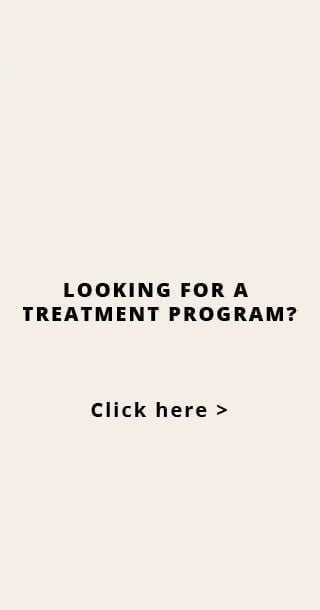Estimated reading time: 8 minute(s)
When we talk about addiction, most people view it as dependence on a certain drug, alcohol, or even prescription medications. Not many of these individuals know that there is a third type of addiction with an entirely different perspective: behavioral addiction.
From the internet to gambling to sex, people can get hooked on any behavior to the extent that they cannot live without practicing it. Many of these activities are so normal that it gets hard to believe that people become addicted to them. Nevertheless, the cycle of addiction still takes over, making life a constant struggle for these individuals. Fortunately, there are plenty of chances to recover from a behavioral addiction. Still, to get there, it is essential to learn more about this type of addiction, its types, and the treatment modalities used to manage it.
Behavioral Addiction Examples and Types
Although most types of behavioral addictions do not have formal recognition by the DSM-5, many healthcare professionals consider them disorders possible to manage and treat. Some common examples and types of these nondrug addictions include the following.
Gaming Addiction
Up to 41 percent of individuals who play video games admit doing so to cope with the stressors or escape real life altogether. Technology has played a crucial role in spreading this type of behavioral addiction. So far, up to 7 percent of regular video game players admit feeling addicted to this activity. This type of behavioral addiction is widespread in young adults and adolescents. Male adolescents living with authoritative parents who believe that they are much smarter at role-playing than maintaining real-life relationships are at a higher risk of developing a gambling addiction. Similarly, co-existing issues like aggression, neuroticism, and anxiety also make one vulnerable to developing this type of addiction.
An interesting thing to remember is games with multiplayer or online role-playing cause more addiction than others.
Internet Addiction
Some people cannot keep themselves from using computers or checking their social medial or emails obsessively. Such people are known as internet addicts, a condition that affects almost 8.2 percent of adults in North America and Europe. Studies suggest that women, non-drinkers, and non-alcoholics are more likely to suffer from internet addiction.
Sex Addiction
Sex addiction refers to a pattern of sexual behaviors or impulses that generate impairment or distress in social, occupational, family, and other parts of life. If left untreated, people with this behavioral disorder usually commit illegal acts, such as voyeurism or rape. Approximately 3 to 6 percent of people in this country have similar complaints, yet we have a habit of trivializing everything unless it does not make a news headline.
Many factors are behind the rising prevalence of sexual addiction. For example, the increase in dating apps and the availability of free pornography force people to engage in sexually compulsive disorders that may prove detrimental to their overall health. Such people don’t enjoy more but feel tempted to engage in sexual intercourse more often than others, regardless of what the circumstances in the surrounding environment are.
It may be interesting to know that substance abuse is a key player in triggering and maintaining sex addiction. Approximately 83 percent of people with this behavioral disorder have been found to have a co-existing drug-related issue. The issue is slightly more prevalent in men, and people with autism spectrum disorder are also at a higher risk than others. Individuals with untreated borderline personality disorder and bipolar disorder can easily lead to sexually compulsive behaviors, so be careful.
Gambling Addiction
Gambling addiction is when an individual engages in compulsive gambling and betting despite acknowledging its adverse consequences. The condition currently hits up to 10 percent of U.S. adults across the country.
Vulnerable people can easily gamble anywhere or anytime. Previously, these people had to visit casinos or other designated facilities to fulfill their gambling addiction. However, with modern technology, such people can continue engaging in this behavior from the comfort of their homes. The invention of mobile phones and laptops has furthered the game as now people have 24/7 access to online gambling applications.
Shopping Addiction
The habit of shopping can quickly spin out of control to convert into an impulse control disorder. Such types of people rely on shopping for new items to cheer up their mood or feel better immediately; however, they mostly end up experiencing guilt later on. Research has revealed that this behavioral addiction affects girls more than boys and can lead to bigger issues if not treated in time.
How to Stop Behavioral Addiction: Professional Means of Treatment
Despite the fact that many types of behavioral addictions still require formal recognition as diagnosable conditions, there are plenty of treatment options available to manage them. In most parts of the United States, patients can easily find inpatient and outpatient treatment programs offering individual and group therapy options for these non-drug addictions. Research also reveals that many treatments meant to treat substance use disorder can effectively manage a behavioral addiction.
The only drawback to seeking these treatment programs for a behavioral addiction is its financial cost. Since behavioral addiction still falls into the diagnosable condition category, insurance may not cover the cost of their treatment. However, many rehabs still try to make treatment affordable by offering discounts and sliding scale rates. Some common treatment modalities to treat behavioral addictions include the following:
Outpatient therapy
A licensed counselor, psychologist, or social worker can provide outpatient therapy in the form of office-based sessions that may occur individually, in the form of a group, or alongside family members. It is essential to ensure that the expert leading this therapy specializes in behavioral addiction and knows how to manage them. A typical outpatient therapy session lasts for 60 minutes and occurs once or twice a week.
Medication
While medicine is not usually a first-line treatment for behavioral addiction, many people might be interested in exploring all their options. Only a licensed medical provider can prescribe these medications according to individual circumstances. People using medication to keep their behavioral addiction under control require medication evaluations and regular follow-up sessions to ensure that these tablets are working fine without any side effects. Many people also combine medication with therapy to achieve the best outcomes.
Residential & Inpatient Treatment
Inpatient and residential treatment takes place in specialized units where clients stay onsite 24/7 throughout the entire treatment duration. The program includes staff members, medication prescribers, therapists, nurses, addiction counselors, and more. This level of care is perfect for those with more intense symptoms of behavioral addiction who require a highly-structured care plan. The length of an inpatient or residential treatment plan generally varies from one person to another but may range from one month to three months.
Support Groups
Many groups in the community offer support and help at no charge. These groups conduct informal gatherings of people struggling with common issues and provide them a platform to share their stories and get support from those who have gone through similar experiences. Participation in this group is peer-led and often voluntary, meaning that a trained professional may or may not lead these groups.
FAQs
What is the difference between substance addiction and behavioral addiction?
A substance addiction refers to a dependence on drugs, such as heroin, cocaine, opioid, or a simple painkiller. In such a type of addiction, an individual experiences intense cravings for a particular drug and cannot function without having it in the body. On the other hand, behavioral addictions are an entirely different phenomenon in which an individual feels compelled to adopt a certain behavior. This behavior can be related to eating, using social media, shopping, gaming, etc. Also known as non-substance addictions, the concept behind these behavioral addictions is that a person does feel the characteristic symptoms of addiction. Still, these symptoms are not a response to substance use. Instead, an action of a set of these actions triggers calming or euphoric feelings in people that force them to engage in these actions more often.
Who can develop a gambling addiction?
Recent statistics have revealed that gambling addiction is more likely to hit older individuals. However, it can also hit people between the ages of 18 and 24. Overall, the problem has been increasing at all levels since it has now become easier for anyone to place bets and gamble due to advancing technology. It is encouraging to know that while gambling has significantly increased in the last decade, the levels of gambling addiction have remained somewhat constant. That said, the levels of this behavioral addiction have seen a rise in the younger age group, with up to 92 percent of teenagers reportedly engaging in gambling activities during the past years.
What are the consequences of non-drug addictions?
Non-drug addictions or behavioral addictions can create multiple problems in a person’s life, relationships, and functioning. These behaviors also instill considerable distress and can be challenging to change, no matter how willing a person is to stop. Most people living with this problem eventually become tired of the toll their behavior is taking on their life, along with the lives of their loved ones. They may also bear significant losses in terms of relationships and finances. Life for such people can quickly go from fulfilling and exciting to embarrassing.
What are Some Behavioral Signs of Addiction?
To seek help for a behavioral addiction, it is imperative to learn how to identify one in the first place. For this purpose, consider the following symptoms in mind:
- Spending the majority of time engaging in a certain behavior, thinking about engaging in the behavior, or recovering from its effects
- Continuing to practice this behavior despite acknowledging the physical and mental harm it brings
- Minimizing or hiding the extent of the behavioral addiction
- Experiencing dependence on the behavior as a way to feel normal or cope with emotions
- Facing trouble in letting go of the behavior no matter how much you try
- Experiencing symptoms of withdrawal (for example, low mood or excessive irritability) as you try to stop
- Neglecting school, family, or work to engage in the behavior more frequently
How can behaviors be addictive?
Just like drugs and alcohol trigger addiction by impacting the brain and balancing out their neurotransmitter levels, certain behaviors also do the same job by inducing feelings of euphoria or sedation. These feelings are what attract the majority of people towards developing a behavioral addiction.


